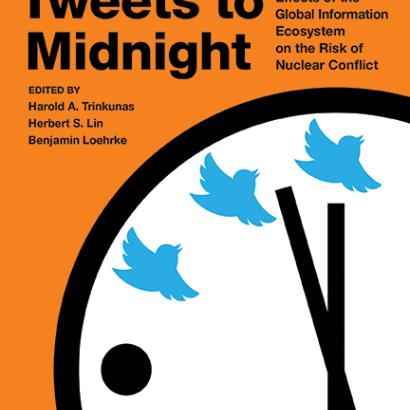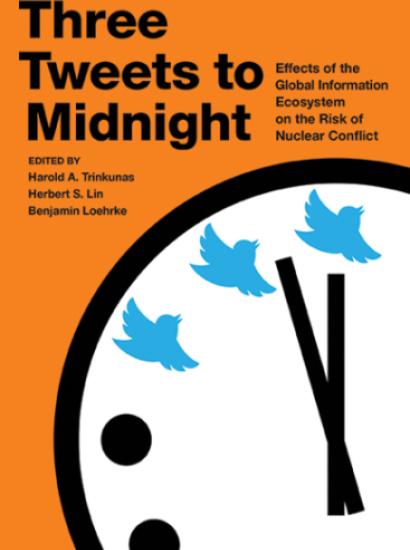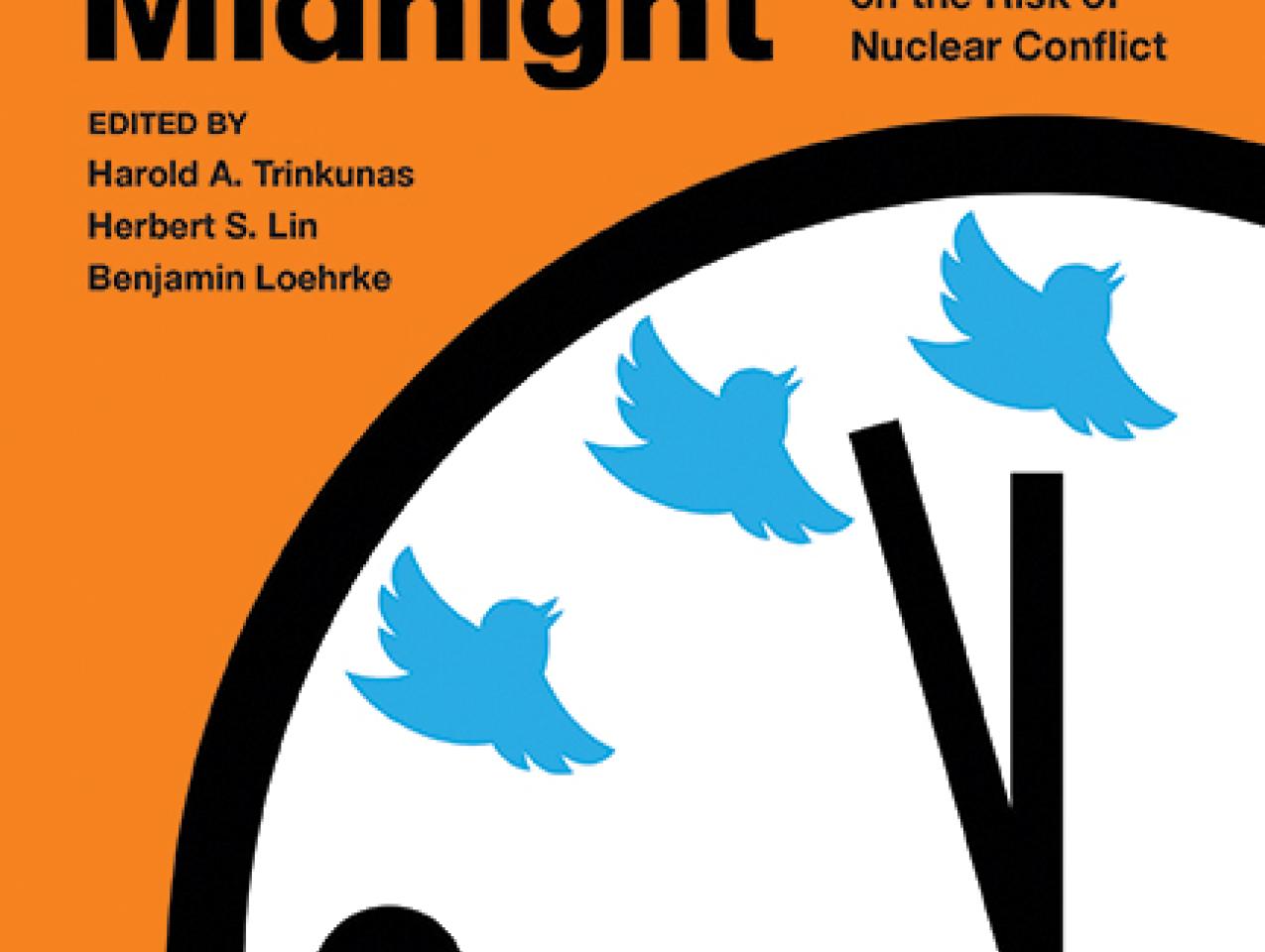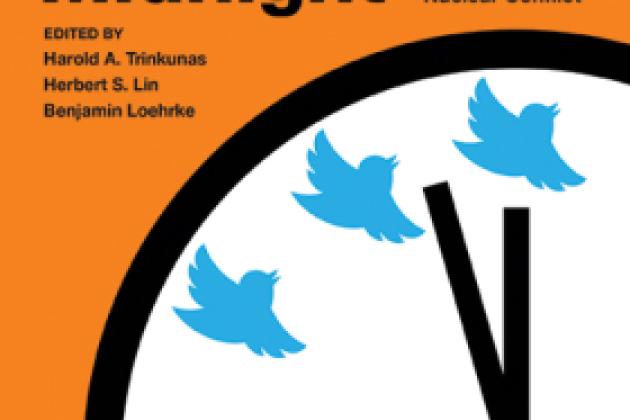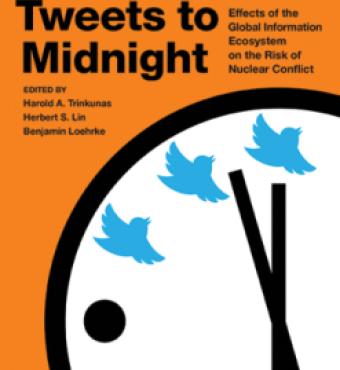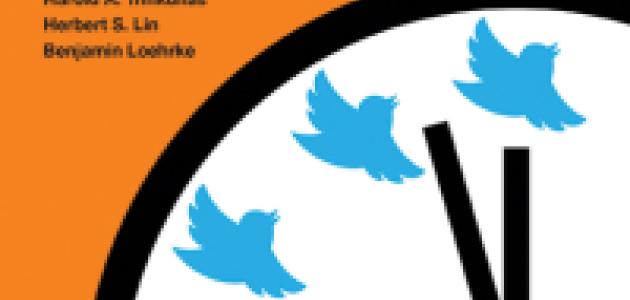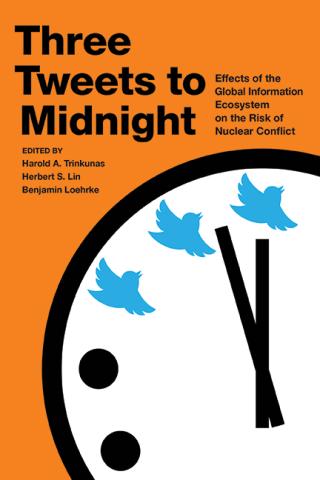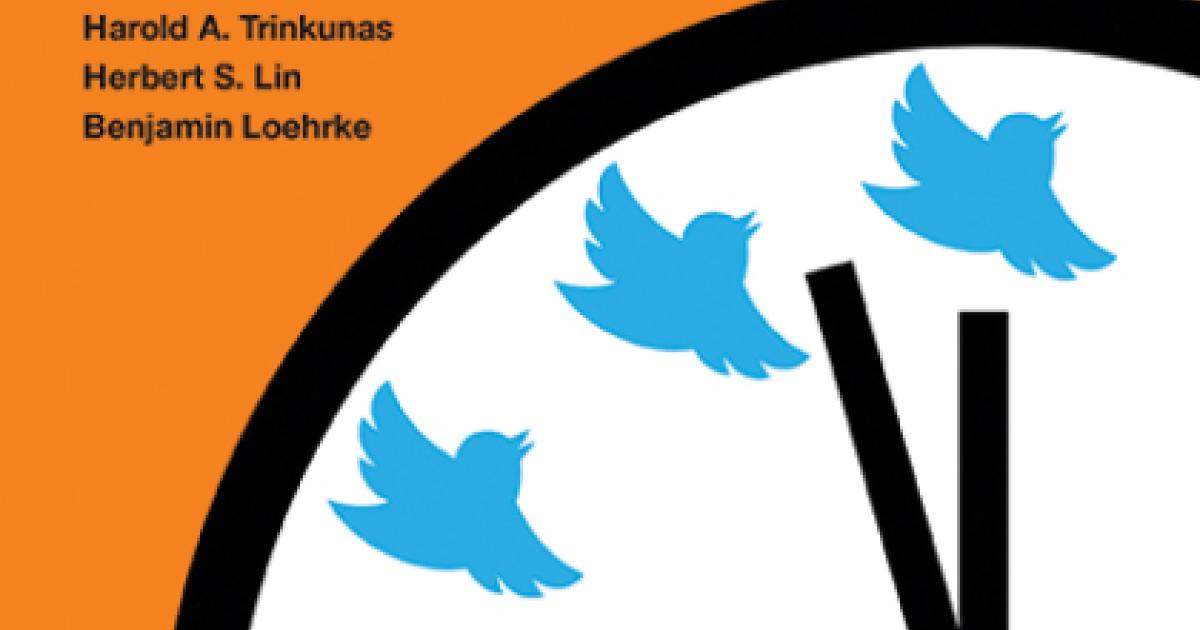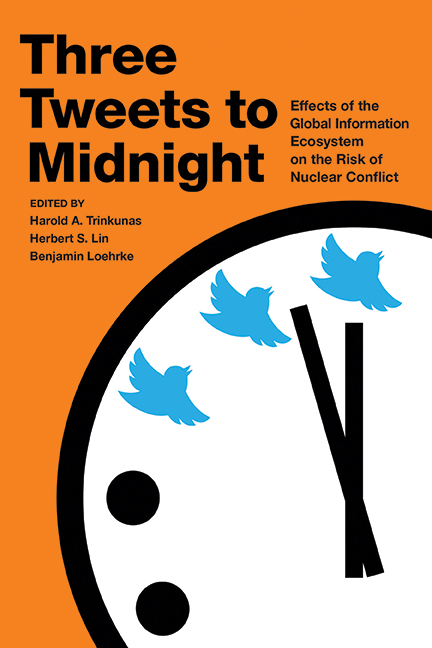
Hoover Institution (Stanford, CA) – The Hoover Institution Press published a new volume about how the rise of social media and the new global information ecosystem have created conditions for the rapid spread of misinformation and disinformation that can potentially fuel conflict between nuclear powers.
Three Tweets to Midnight: Effects of the Global Information Ecosystem on the Risk of Nuclear Conflict is edited by Harold A. Trinkunas, Herbert S. Lin, and Benjamin Loehrke, and represents a collaboration among two of Stanford University’s premier research centers—the Hoover Institution and the Center for International Security and Cooperation at the Freeman Spogli Institute—and the Stanley Center for Peace and Security. Contributors include scholars and affiliates of Stanford University as well as other leading research centers across the world.
“The publication of Three Tweets to Midnight is the capstone of two multidisciplinary workshops featuring the nation’s top experts in the areas of psychology, information warfare, cybersecurity, international relations, and nuclear strategy,” said Trinkunas.
The Three Tweets to Midnight contributors contend that as more content reaches more people in more places than ever before, it becomes increasingly difficult to discern which information is true, false, or exaggerated. Furthermore, the speed at which information is transmitted throughout the internet doesn’t give government officials enough time to review it for inaccuracies and falsehoods before they decide upon courses of action.
The contributors maintain it is not just humans that are engaging in this new information ecosystem. States and nongovernmental actors deploy “bots,” automated artificial intelligence systems that pose as individuals on social media to magnify and propagate particular issues or agendas.
“The world is currently experiencing a ‘post-truth’ era,” said Lin. “When facts matter less, the constant flow of information places us more at risk for divisions within societies, international conflict, and more lethal confrontations like nuclear war.”
In the introductory essay, Trinkunas, Lin, and contributor Danielle Jablanski of Stanford’s Cyber Policy Center ask readers to imagine if the 1962 Cuban Missile Crisis took place in today’s global information ecosystem. They contend that President John F. Kennedy and his National Security Council might not have had the necessary time to deliberate before his speech about the discovery of Soviet nuclear-armed missiles in Cuba.
The scholars offer a scenario where satellite images of the missile sites go viral on social media, prompting numerous tweets and relentless commentary. They argue that such a media environment might have pressured President Kennedy to act rashly and not de-escalate a crisis that brought the United States and Soviet Union to the brink of nuclear war.
Essays in this volume cover such topics as the psychological underpinnings in the “post-truth” era that have caused more people to rely on their emotions when forming political opinions; how the current information environment interrupts traditional patterns of decision making by government leaders regarding the use of nuclear weapons; the use of “bots” to craft narratives at the start of a crisis; how the behavior of online communities helps expose the manipulations of information operations; the impact of aggressive rhetoric on the escalation of conflict; the effect of false stories on nuclear-arms negotiations; the influence of information ecosystems on the trajectory of public opinion during nuclear crises; and what can be done to mitigate the effects of information ecosystems on the risk of nuclear conflict.
“Three Tweets to Midnight is a comprehensive guide on navigating the complexities of conflict in the information age.” said Loehrke. “Our hope is that readers of the book will be better able to discern fact from fiction, and do their part in de-escalating conflict that could potentially lead to nuclear war.”
Acclaim for Three Tweets to Midnight:
“A gripping story of how social media can result in a nuclear catastrophe, either through a blunder or through the actions of a malignant provocateur. No issue could be more timely or more important, considering the profligate use of tweets today by the president and other government officials, and the need for deliberation in dealing with national security crises.”
—William H. Perry, 19th US Secretary of Defense
About the Editors
Harold A. Trinkunas is the deputy director of, and a senior research scholar at, the Center for International Security and Cooperation at the Freeman Spogli Institute for International Studies at Stanford University. His research focuses on issues related to foreign policy, governance, and security, particularly in Latin America. Trinkunas has coauthored Militants, Criminals, and Warlords: The Challenge of Local Governance in an Age of Disorder (Brookings Institution Press, 2017) and Aspirational Power: Brazil on the Long Road to Global Influence (Brookings Institution Press, 2016). He authored Crafting Civilian Control of the Military in Venezuela (University of North Carolina Press, 2005). He coedited and contributed to American Crossings: Border Politics in the Western Hemisphere (Johns Hopkins University Press, 2015), Ungoverned Spaces: Alternatives to State Authority in an Era of Softened Sovereignty (Stanford University Press, 2010), Global Politics of Defense Reform (Palgrave Macmillan 2008), and Terrorism Financing and State Responses (Stanford University Press, 2007). He received his doctorate in political science from Stanford University in 1999.
Herbert S. Lin is a senior research scholar for cyber policy and security at the Center for International Security and Cooperation and the Hank J. Holland Fellow in Cyber Policy and Security at the Hoover Institution at Stanford University. His research interests focus on cybersecurity and cyberspace. Lin is particularly interested in the use of offensive operations in cyberspace as instruments of national policy and in the effects of information warfare and influence operations on national security. In addition to his positions at Stanford University, he is chief scientist emeritus for the Computer Science and Telecommunications Board, National Research Council of the National Academies, where he served from 1990 through 2014 as study director of major projects on public policy and information technology; and is an adjunct senior research scholar and senior fellow in cybersecurity (not in residence) at the Saltzman Institute for War and Peace in the School of International Public Affairs at Columbia University. Lin is a member of the Science and Security Board of the Bulletin of the Atomic Scientists. In 2016, he served on President Obama’s Commission on Enhancing National Cybersecurity. He received his doctorate in physics from MIT.
Benjamin Loehrke is the program officer for nuclear policy at the Stanley Center for Peace and Security, where he designs, organizes, and implements aspects of the center’s work on solutions to halt the spread and avoid the use of nuclear weapons. He previously worked at Ploughshares Fund, an international security foundation. His areas of interest include nuclear strategy, arms control, nonproliferation, and implications of emerging technologies for international security. His writing has appeared in the Bulletin of the Atomic Scientists and the Stanford Social Innovation Review. He holds a master’s degree in public policy from the University of Maryland and a bachelor’s degree in political science from Indiana University.
Contributors
Kelly M. Greenhill, Danielle Jablanski, Jaclyn A. Kerr, Mark Kumleben, Jeffrey Lewis, Herbert S. Lin, Benjamin Loehrke, Rose McDermott, Ben O’Loughlin, Paul Slovic, Kate Starbird, Harold A. Trinkunas; Kristin Ven Bruusgaard, Samuel C. Woolley.
Three Tweets to Midnight is available in print and e-book formats. Click here to purchase.
For coverage opportunities, contact Jeffrey Marschner, 202-760-3187, jmarschner@stanford.edu.







